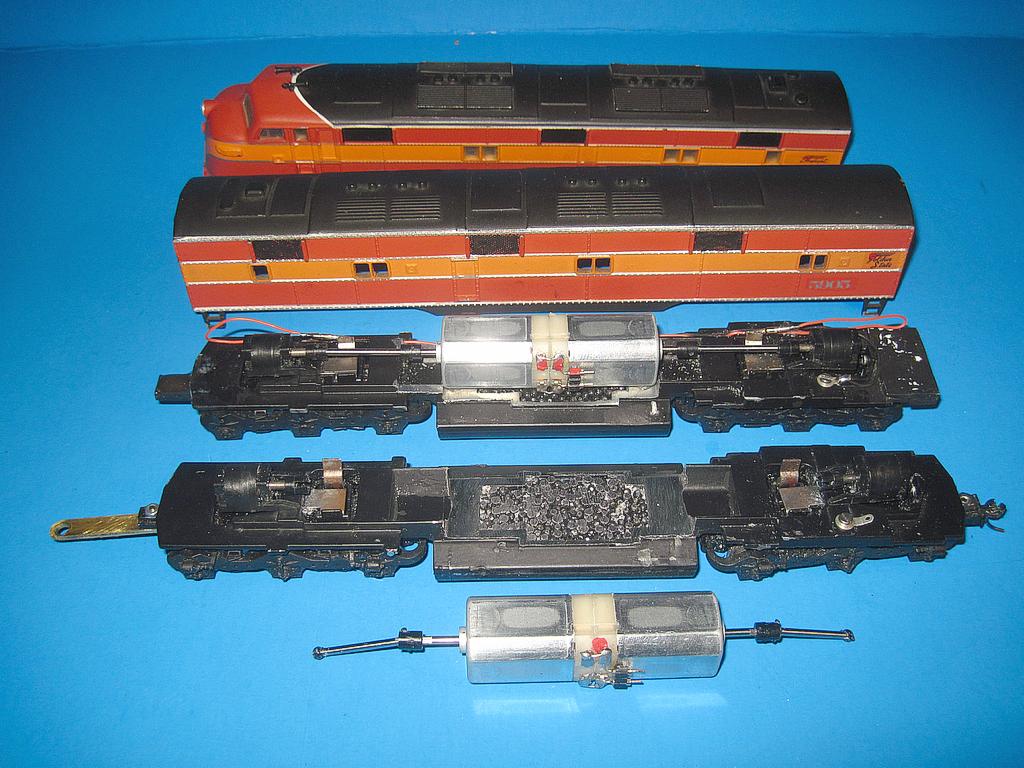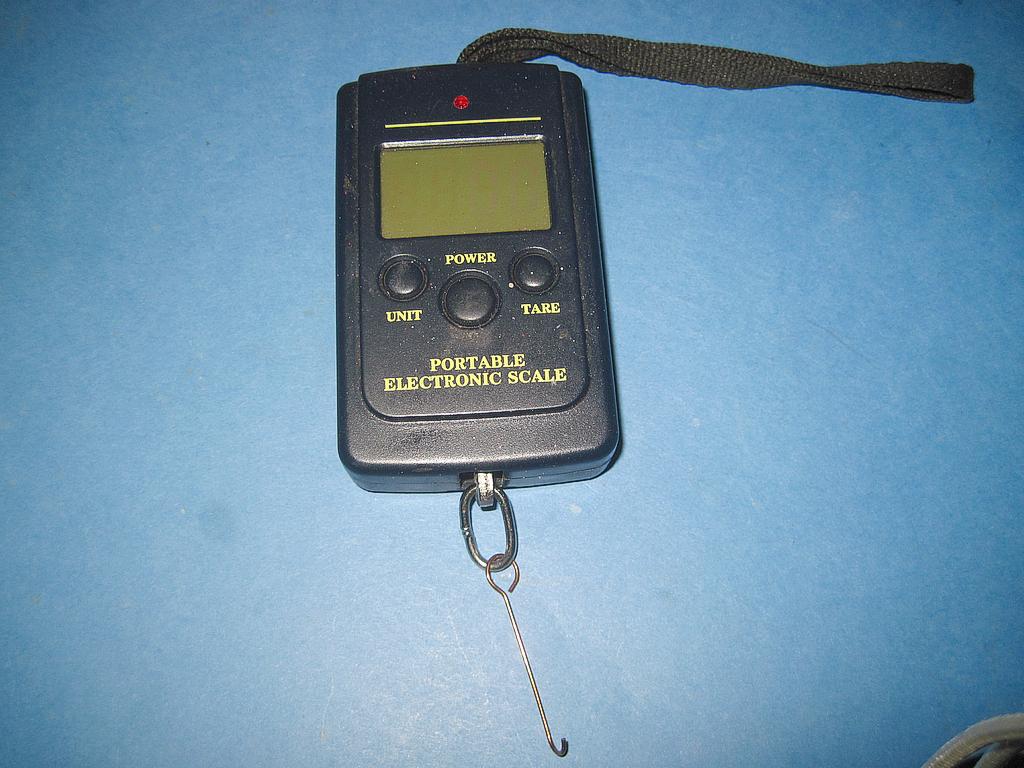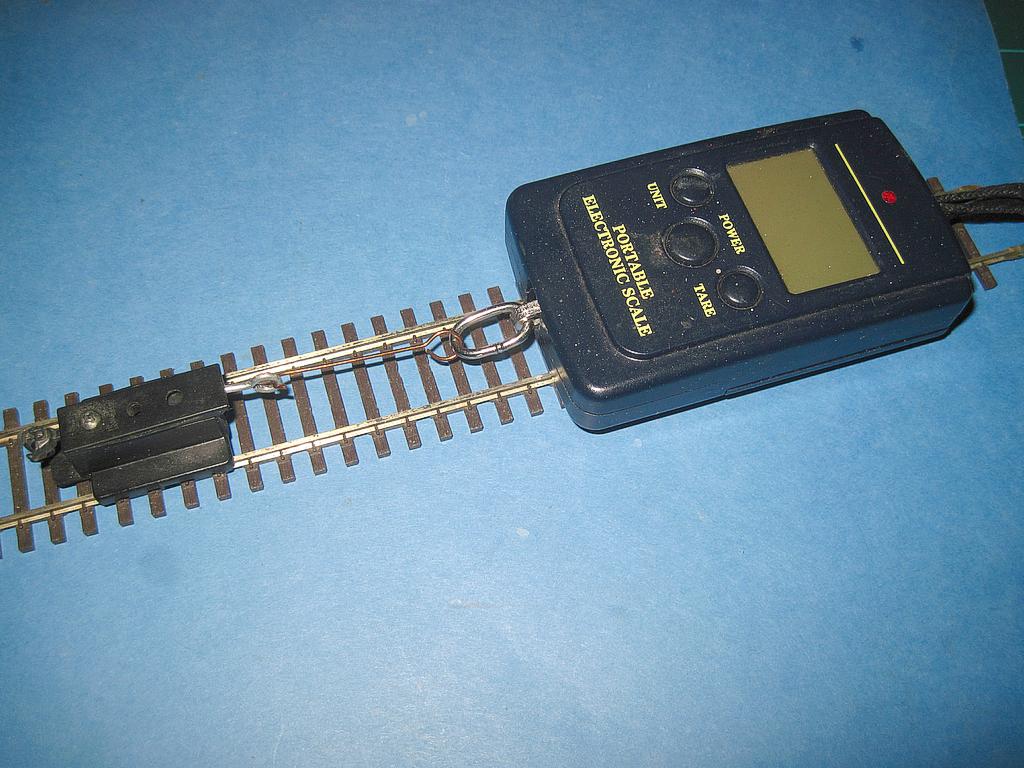I have read that the maximum pulling ability of most locomotives, model or full-size, is equal to about 25% of their weight, and some modified Athearn U-Boats verified that figure, almost exactly, in tests done at a nearby model railroad club.
Each of the three locos tested weighed 33oz., and each tested at a drawbar pull of 8.3oz., plus-or-minus a bit.
I don’t have much level track or straight track on the lower part of my layout, but I did do tests with most of my locomotives on the two most severe grades (2.8%). One is fairly short, about 15’ with two 34" radius curves in opposite directions.
This helped me to determine (very roughly, as I would consider the rolling qualities of my freight cars to be rather disparate) “tonnage ratings” for most locos.
I did test the U-Boats on that short grade, and was disappointed to see that one unit could not pull a 44 car hopper train completely up the grade, slipping its wheels about 6’ from the crest of the grade. Much of the trailing train was still on straight and level track.
I backed the train down the hill, and added another unit to the one used in the first run. The two units easily took the train up the hill, with no wheelslip whatsoever. I would have liked to have added more cars, but I had no more hoppers, and no “coal” to add to them either. I use Black Beauty blasting medium for Anthracite coal, so the trailing train’s weight was 22lbs.
When I backdated my layout, those diesels, along with most of my other ones, were sold.
I did another test with four remotored Athearn switchers (the SW7s, originally sold as SW1500s), and they were able to pull a train of 71 cars, with various rolling qualities, up the 2.8% grade to the second level (or at that time, where the second level was to be built).
I repeated that test several times, with the locos in various places within the train, and substituting modified Athearn Mikados and/or Bachma



